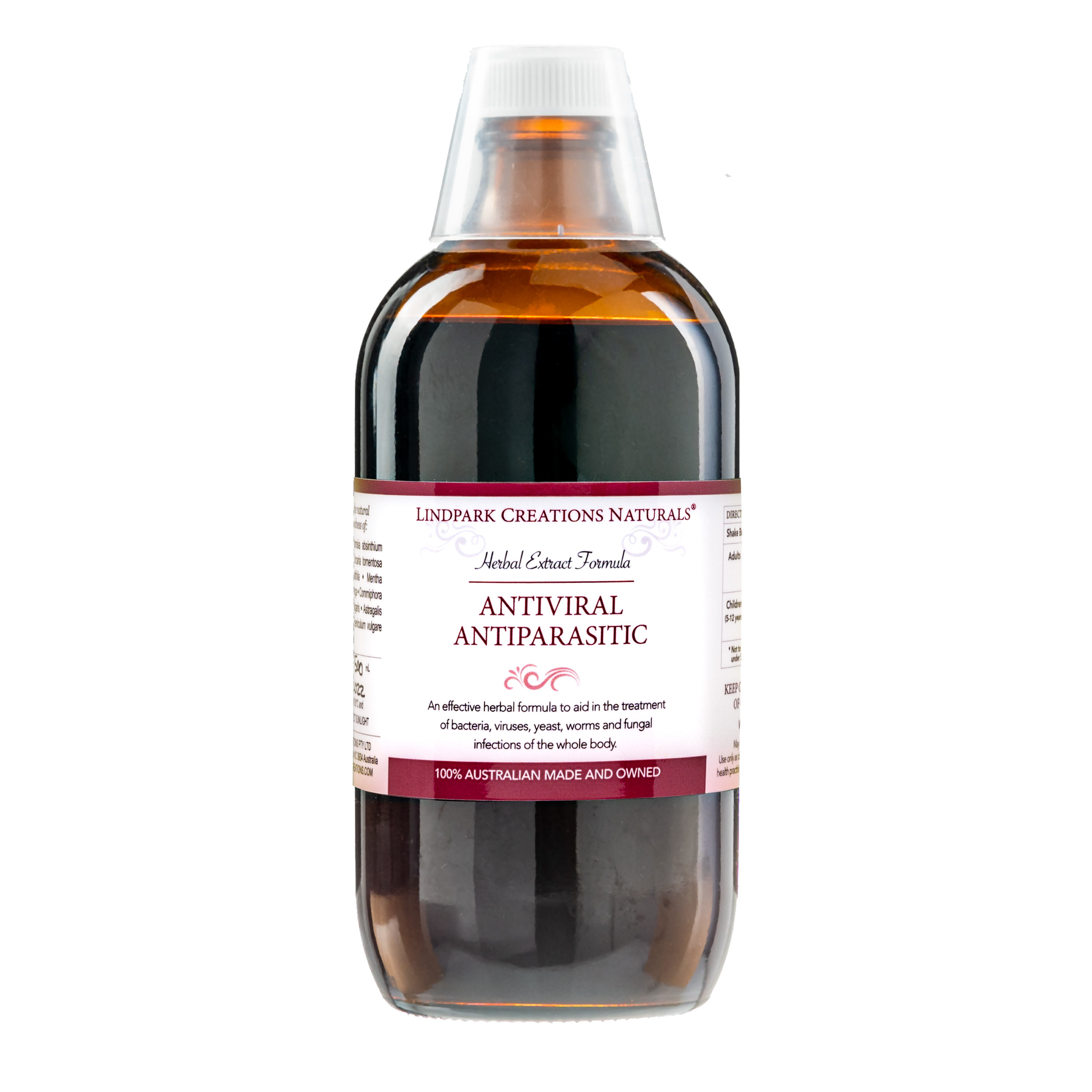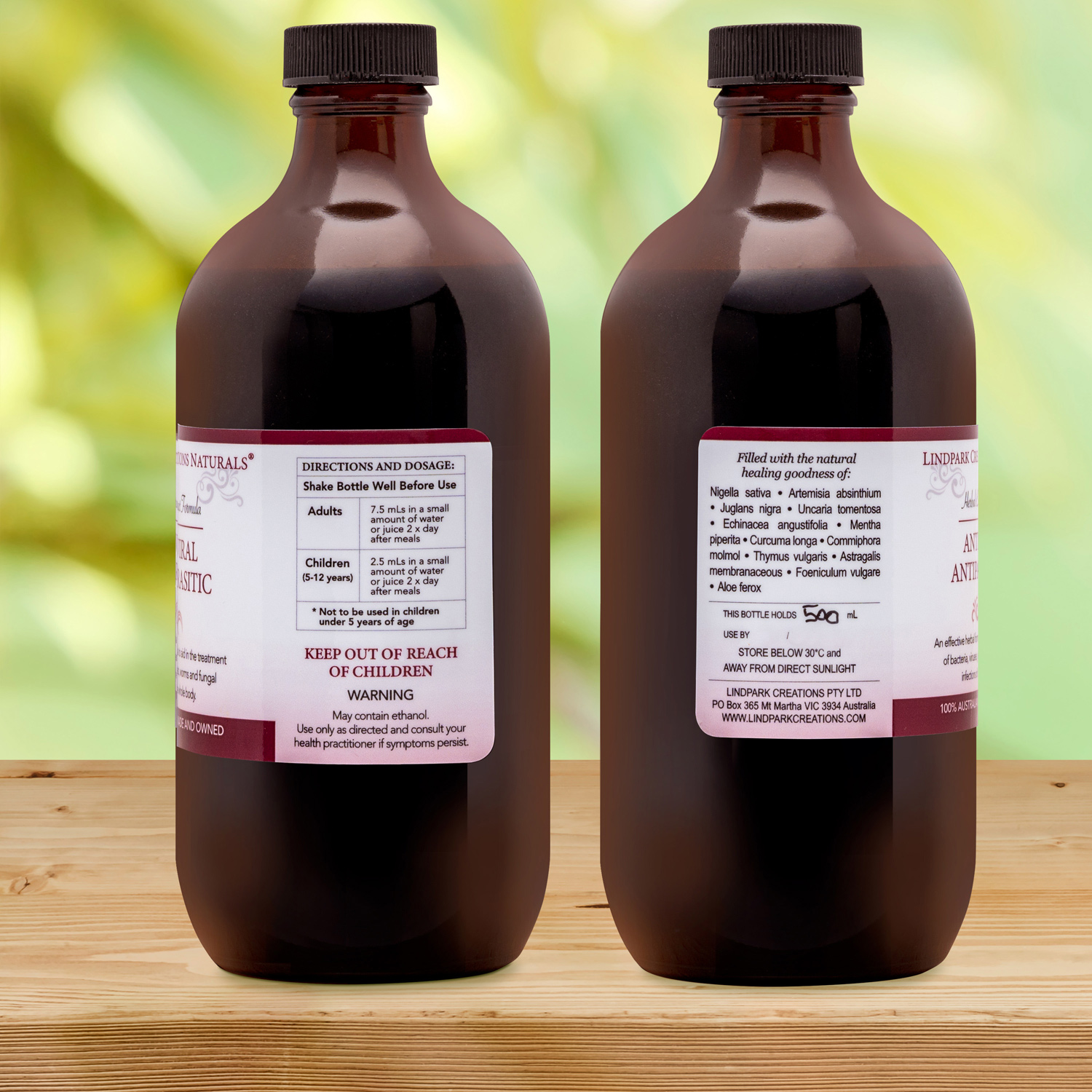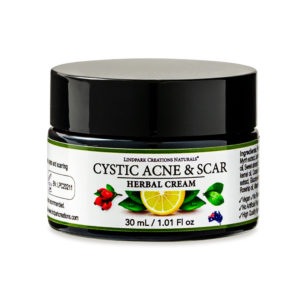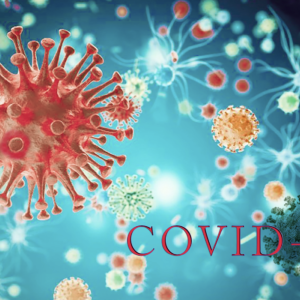Description
Antiviral Antiparasitic Ingredients Traditional Uses
Nigella sativa:
Traditionally considered in many cultures a “miracle” herb. With a rich history dating back 2,000 years used widely in traditional healing systems. Most of the properties of this herb are due to the pharmacological activity of thymoquinone. Since it’s isolation in 1963, thymoquinone has been extensively studied to determine its antioxidant, antihistaminic, anti-inflammatory, anthelmintic, antiallergic, antibacterial, antifungal, anti-hypertensive, hypoglycaemic, hypolipidaemic, gastroprotective, nephroprotective, hepatoprotective, anti-cancer and immunomodulatory activity.
Artemisia absinthium:
Traditionally used as an anti parasitic, anthelmintic and a bitter digestive, to stimulate digestion
Juglans nigra:
High in tannins that have anti parasitic, antibacterial compounds. High in antioxidants, vitamins, minerals and omega 3 fatty acids. May also assist in cardiovascular health.
Aloe vera:
Contains anthraquinone-related glycosides called aloins, aloe-emodin, resin, with a soothing and healing effect to damaged tissue; also anthelmintic
Uncaria tomentosa:
Parts used are the inner bark of root and stems, containing alkaloids, sterols, polyphenols, triterpenes and glycosides. Traditionally used for it’s antimicrobial, antiviral properties. Also immune stimulant, hypotensive, antioxidant and vulnary.
Echinacea angustifolia:
Contains volatile oil, glycoside (echinacoside), echinacein, acetylenes, resin. With traditional actions of being anti-infective, increasing the body’s resistance to infections.
Mentha piperita:
Contains menthol, bitter principle, tannins which have a calming and antispasmodic effect on the digestive system; relieves nervous bowel, flatulence, colic and diarrhoea; traditionally used for nausea and managing fevers.
Curcuma longa:
Contains volatile oil (zingiberene, tumerone), Curcuminoids, bitter principle, resins, CHO, proteins, nutrients, flavonoids. Traditionally used to have the following actions: anti-inflammatory, antioxidant, anti-cancer, anti-microbial, antibiotic, astringent, circulatory stimulant, choleretic, anthelmintic, hypolipidemic, anti-platelet aggregating, carminative, alterative, liver trophorestorative, hepatoprotector
Commiphora molmol:
Contains volatile oil (heerabolene, cadinene, elemol, eugenol, cuminaldehyde, numerous furanosesquiterpenes), resins (commiphoric acids, commiphorinic acids, heeraboresene, heerabolmyrrhols, commiferin), gums, sterols, tannins. Medicinally used as mucosal stimulant, expectorant, antiseptic, astringent, anti-inflammatory, antispasmodic, carminative, demulcent, antimicrobial, antioxidant
Thymus vulgaris:
Contains volatile oil up to 3% inc. terpines such as thymol, carvacrol, borneol, and cineol; Tannins; Bitters; Resin; Flavonoids; Gums. Traditionally used for the following actions: anti-septic, anti-helmintic, anti-viral, anti-bacterial, astringent, expectorant, secretolitic (decreases over-secretions), spasmolytic.
Foeniculum vulgare:
Contains volatile oil (up to 8% consisting of anethole, estrogole, fenchone), flavonoids (rutin, quercetin, kaempferol glycosides), coumarins, sterols. Traditionally used as a carminative to the digestive system, anti-inflammatory to the intestines and may relieve griping, colic and flatulence.
The benefits of taking a herbal liquid tincture, is that you are receiving the ‘life force’ of each of the whole plants contained within…including all the vitamins, minerals, amino acids and fatty acids that are within each plant and their associated medicinal actions.






